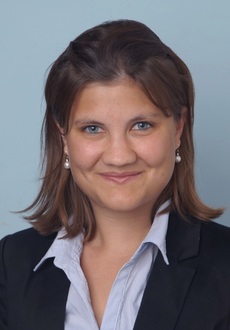
Dipl.-Math. oec. Hendrikje Pauer
- Office Hours: nach Vereinbarung
- Room: 005
- Phone: +49 721 608-46887
- hendrikje pauer ∂does-not-exist.kit edu
Karlsruher Institut für Technologie
Institut für Prozessrechentechnik, Automation und Robotik
Geb. 40.28
Engler-Bunte-Ring 8
76131 Karlsruhe
Homepage
The project "Surface Detection Using Fiber Bragg Grating Sensor Networks" deals with the development and optimization of a sensor network consisting of Fiber Bragg Grating (FBG) sensors. This sensor network is supposed to spatially detect the surface of different objects. The FBG sensors used here are in principle strain gauges based on fiber optic. With high accuracy, the sensor fibers detect strain changes on the object surface caused by object deformation. Further they provide significant benefits due to their small fiber diameter and their electromagnetic compatibility.
The concept of the surface detection covers the development of an algorithm for shape reconstruction, by evaluating the deformation measurement data. In the process of practical fabrication of a sensor prototype, the exact fiber positioning has proven to be difficult to implement. However, today´s conventional shape reconstruction algorithms assume that the exact fiber positioning is realizable. So far, no algorithm was developed, that reconstruct the object shape via randomly distributed sensors fibers. Nevertheless, taking into account that inaccuracy in fiber positioning has to be expected, such algorithms are required. The algorithm developed in this project is distinguished from conventional calculation methods by assuming lower requirements concerning the sensor positioning. That lower requirements are equalized by more complex algorithms based on new theoretical approaches. The used theory is subject of differential-geometric mathematical concepts and focuses on tensor fields.
Further aim of the project is to optimize the orientation and structure of the sensor network. Thereby, improving the accuracy of the shape reconstruction, accompanied by a large number of sensor fibers, is set against optimizing the minimized sensor structure and cost saving production, going with minimizing the number of sensor fibers.
This project is part of the Research Training Group 1194 "Self-organizing Sensor-Actuator-Networks" and motivated by the project "Single-Port Surgery" of the research group "CoMeT", as the development of the algorithm is specifically targeting to be used in sensor systems for single-port surgery. Finally, the overall goal of the project is the implementation of the algorithm such that a precise shape sensor for detecting the shape of miniaturized surgical instruments can be realized.
